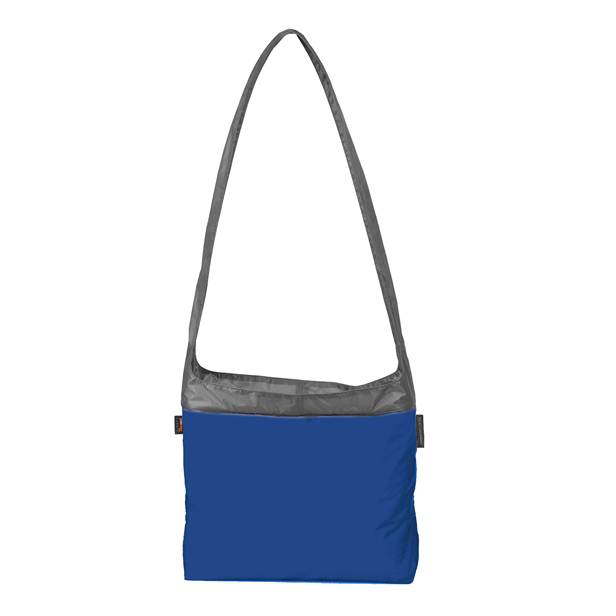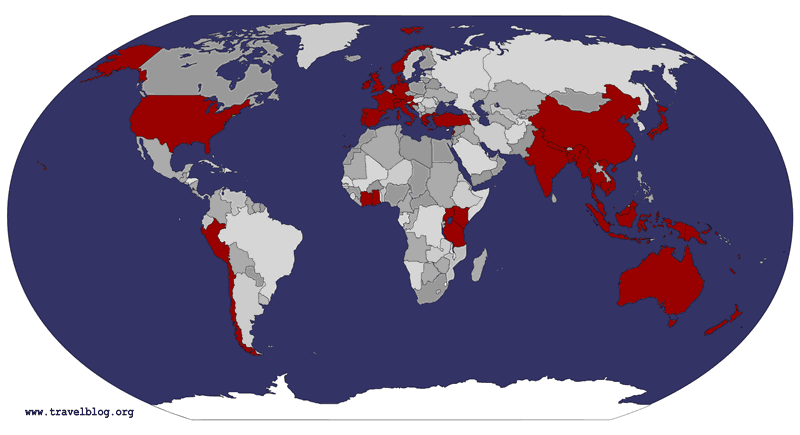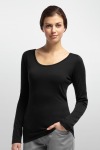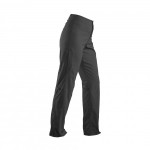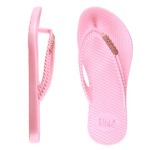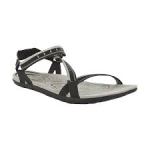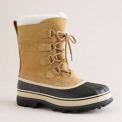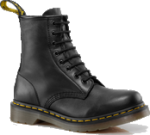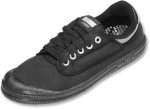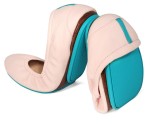Choose Fabrics Carefully
Wool is temperature regulating in hot, cold and damp conditions, and comes in fine merino. Goose down is highly compressible, light and very warm, but performs poorly when wet, so necessitates a waterproof shell over the top. Synthetics dry quickly, are light and require little care, but become smelly quickly. Beware of cotton, which is heavy and slow to dry. Fleece is not as warm when wet, or as wind resistant as wool.
Layer
Layering thin garments is warmer than wearing one heavy sweater. Layering also allows you to carry a wardrobe that is versatile in different climates. The basic principle of layering is to firstly have a close fitting garment, such as a shirt, leggings or socks, which draws moisture away from your body. Wool or synthetics are the best fabrics for this purpose. Next, put on thicker, insulating layers, for which wool and puffy jackets are excellent. On top, add a windproof layer, such as a raincoat or polyester jacket. This layer keeps the warm air in, and the cold out.
Know the Beast
Check the weather at your destination on a site such as Accuweather. Remember that the minimum temperature is usually in the middle of the night when you’ll be tucked up in shelter, in a sleeping bag or blankets, so you probably do not need to plan for that level of chill.
The Clo
The insulation value of clothing for thermal comfort when people are at rest is measured in clo. The baseline is 1 clo of clothes at 21 degrees Celsius/ 70F when a person is inactive. A man’s business suit, shirt and shoes totals 1 clo. A difference of around .16 clo of garments keeps you warm for each variation of 1 degree, at least above 0 degrees Celsius. There is a cumulative effect of layering, which means that a garment’s clo is worth more when worn under other clothes. Perhaps this is why over about 3 clo, the rate of change in clo value appears to decrease as compared to degrees. A windbreaker won’t actually increase the clo, but will help you to keep warmth in your personal microclimate. Account for the fact that you won’t spend much of your holiday being inactive outdoors, which significantly decreases the amount of clothing required. Several online articles have listed the clo value of various garments and outfits, including a Wikipedia page called Clothing Insulation, which is worth a look. I have summarised and inferred from these here, to create examples of outfits for various temperatures and clo values.
Clos for Temperatures
As everyone perceives heat differently, I’ve added in red what I’ve comfortably worn at various temperatures. 27 degrees Celsius/ 81 F or above (0.04 clo or less), underwear, shorts, t shirt, flipflops =.22 clo
My experience: wear the respectable minimum, but be sunsmart!
25 degrees C/ 77 F (0.4 clo), underwear, shorts, long sleeved shirt, flipflops
My experience: Shorts are not respectable outside western countries.
23 degrees C/ 73 F (0.7 clo), underwear, skirt/trousers, t shirt, a thick fleece or merino jacket, socks, shoes
My experience: a long sleeved merino t shirt can replace the jacket, with no socks or shoes required, and I feel the cold, coming from subtropical Australia!
21 degrees C/ 70 F (1 clo), underwear, skirt/trousers, t shirt, long sleeved shirt, merino jacket, socks, shoes
My experience: no socks, shoes or t shirt are required with a mid weight jacket. Alternatively,150-200 weight merino in all of this outfit is warm enough; briefs, leggings, shorts, midi skirt, cami, short sleeve t shirt, long sleeve t & long sleeve loose top)
19 degrees C/ 66F (1.3 clo), underwear, skirt/trousers, t shirt, long sleeved wool undershirt, long sleeved shirt, jacket, thick socks, shoes
My experience: no undershirt is required.
17 degrees C/ 62 F (1.6 clo), underwear, wool longjohns, skirt/trousers, t shirt, long sleeved wool undershirt, long sleeved shirt, jacket, thick socks, thin socks, shoes
My experience: no thin socks are required.
15 degrees C/ 59 F (2 clo), underwear, wool longjohns, skirt/trousers, long sleeved wool undershirt, flannelette long sleeved shirt, two jackets, thick socks, boots
My experience: no second jacket is required. Shoes rather than boots suffice.
13 degrees C/ 55 F (2.3 clo), underwear, skirt/trousers, t shirt, goose down jacket (quoted sometimes at .55 clo, although a hat and overcoat together are 2 clo, so a good, modern puffy would surely be as warm; see Backpacking Light for expert discussions of jacket insulation values), socks
My experience: to avoid a Michelin Man outfit at 2.3 clo, I used a goose down jacket here, but one should theoretically only kick in at -1 C/30 F when it won’t get wet, as damp down is useless, and socially, only when the locals might wear one! I was comfortable at this temperature in merino pants, long sleeved shirt, a 300gsm merino jacket, thick socks and boots.
11 degrees C/ 52 F (2.6 clo), underwear, skirt/trousers, long sleeved wool undershirt, goose down jacket, thick socks, shoes 9 degrees C/ 48 F (3 clo), underwear, wool longjohns, trousers, long sleeved wool undershirt, tshirt, goose down jacket, thick socks, shoes
My experience: a heavy merino jacket instead of a goose down jacket is enough, but with boots instead of shoes.
7 degrees C/ 45 F (3.2 clo), underwear, wool longjohns, trousers, long sleeved wool undershirt, long sleeved shirt, goose down jacket, socks, boots
My experience: I was a bit cool at this temperature in merino pants, four merino shirts, thick socks and boots. A pair of gloves would’ve been great.
5 degrees C/ 41 F (3.3 clo), underwear, wool longjohns, trousers, long sleeved wool undershirt, tshirt, long sleeved shirt, goose down jacket, thick socks, boots
3 degrees C/ 37 F (3.4 clo), underwear, wool longjohns, trousers, long sleeved wool undershirt, tshirt, merino jacket, goose down jacket, thick socks, boots
1 degree C/ 34 F (3.6 clo), underwear, wool longjohns, skirt/trousers, long sleeved wool undershirt, long sleeved shirt, merino jacket, goose down jacket, thick socks, boots
-1 degree C/ 30 F (3.7 clo), underwear, wool longjohns, skirt/trousers, long sleeved wool undershirt, tshirt, long sleeved shirt, merino jacket, goose down jacket, thick socks, thin socks, boots
My experience: I agree. However, Wikipedia claims a ski outfit is only 2 clo, maybe because you’re active when wearing it.
-3 degrees C/ 27 F (3.8 clo), underwear, wool longjohns, sweatpants, two long sleeved wool undershirts, merino jacket, goose down jacket, thick socks, boots -5 degrees C/ 27 F (3.9 clo), underwear, wool longjohns, sweatpants, two long sleeved wool undershirts, merino jacket, goose down jacket, thin socks, two pairs of thick socks, boots. After this, model yours on an Inupiat wardrobe, covering as much skin as possible. It would be difficult to wear more than 4 clo and still be dextrous.
My experience: at -25 degrees C/ -13F, I added ice grips, snow boots, scarf, wool hat, wool gloves, mitts and another shirt.
To enable you to make your own outfit list, here are the clo values I’ve used above.
| underpants and bra .04 |
shorts .08 |
| wool longjohns .3 |
skirt/trousers .14 |
| sweatpants .28 |
long sleeved wool undershirt .34 |
| tshirt .08 |
long sleeved shirt .25 |
| flannel long sleeved shirt .34 |
merino jacket .36 |
| goose down jacket 2 |
thin socks .03 |
| thick socks .06 |
flipflops .02 |
| shoes .02 |
boots .1 |
